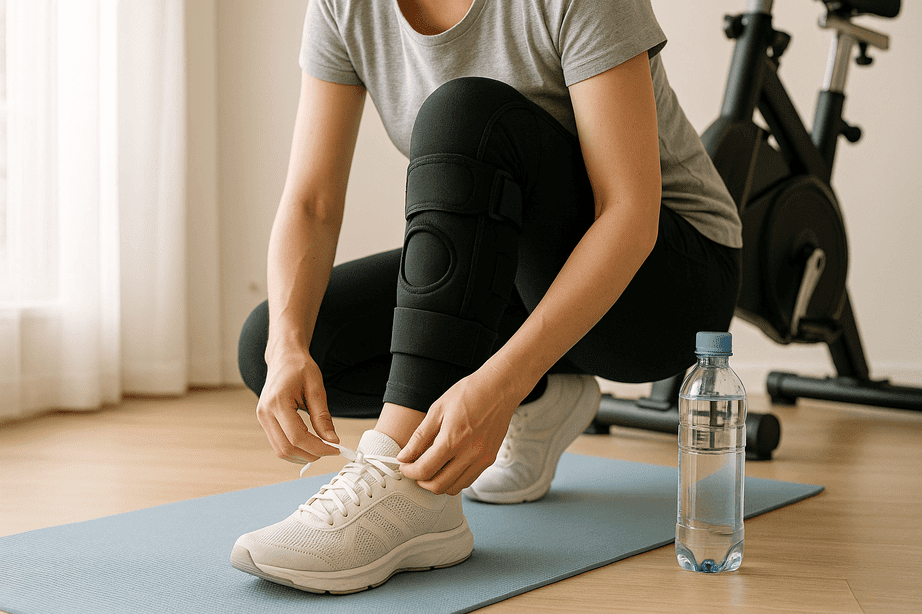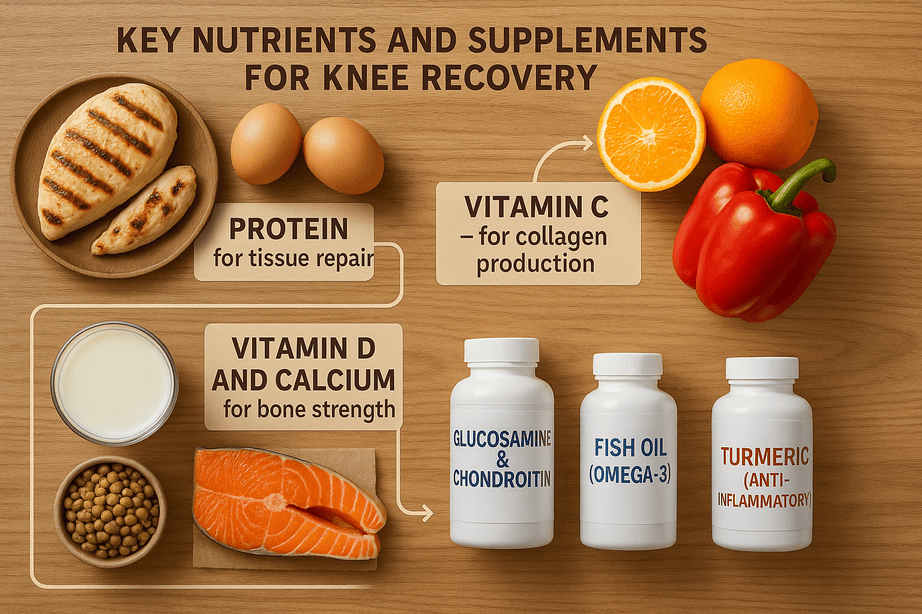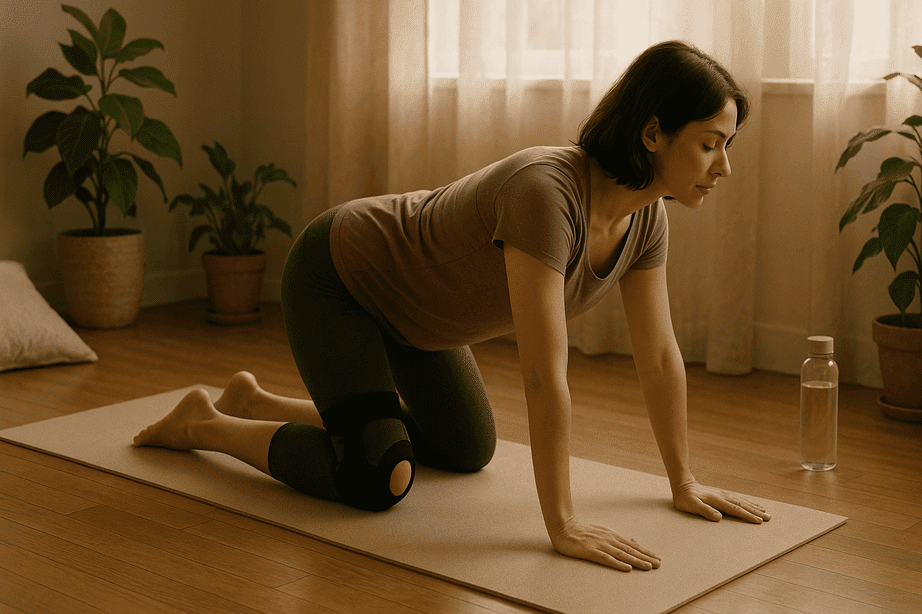10 expert and practical tips on working out again after a knee injury. This complete guide explains safe exercises, nutrition, and physiotherapy in a simple tone.
Introduction: Knee Injury and the Importance of Resuming Exercise
Knee injuries are common and can mess with your daily life, not your fitness routine. After going through one, it’s normal to feel a bit lost about how to start exercising again, or to worry about hurting yourself all over.
But here’s the encouraging part: with the right mindset, planning, and a science-backed approach, you can safely return to working out—and maybe even become stronger and more balanced than before.
Assessing the Knee Before Returning to Workouts
Consult a Doctor or Physical Therapist
The first and most important thing you can do is check in with a specialist. A doctor or physical therapist can Observe thehow well you’ve healed and let you know if it’s safe to start working out again.
Initial Tests and Range of Motion Check
Before any activity, check your knee’s range of motion. Can you bend and straighten it? Is there swelling or pain? If yes, it’s not yet time to resume.
When Is the Right Time to Start Working Out Again?
Signs of Full Recovery
- Significant reduction in pain
- Minimal or no swelling
- Ability to walk and stand without support or pain
Warning Signs That You Should Stop
- Return of severe pain
- Knee locking or unusual sounds
- Swelling after any workout
Safety First: Essential Pre-Workout Tips
Wear Proper Shoes
Supportive sports shoes with soft soles help reduce pressure on the knees.
Use a Knee Brace or Support
Especially in the early stages, a proper knee brace can support and restrict excessive movement.
Always Warm Up
Warm up gently for 5 to 10 minutes—like walking or stationary biking—before exercising.

Best Exercises to Start After a Knee Injury
Low-Impact Cardio
- Walking on flat surfaces or a treadmill
- Stationary cycling with low resistance
- Swimming or aqua-walking
Low-Resistance Strength Training
- Leg raises while lying down
- Wall sits with slight angles
- Gently climbing stairs
Stretching Exercises for Knee Flexibility
Hamstring Stretch
Sit with your legs straight and try to reach your toes gently.
Quadriceps Stretch
Bend the injured leg back and pull your heel toward your buttocks with your hand.
Yoga and Corrective Movements
Gentle yoga poses like “child’s pose” or “cat-cow” help blood circulation and flexibility.
The Role of Balance Exercises in Knee Strengthening
Balance Ball or Bosu Ball Exercises
Stand or sit on a balance ball to improve knee stability.
Single-Leg Exercises on Soft Surfaces
These exercises activate smaller stabilizing muscles around the knee.
How to Gradually Increase Workout Intensity
The 10 Percent Rule
Never increase your workout intensity or duration by more than 10% per week.
Step-by-Step Progress
Every two weeks, increase intensity slightly so your knee has time to adapt.
Movements to Avoid After a Knee Injury
- High-impact jumps and bounding
- Deep squats or heavy lunges
- Running on uneven or sloped surfaces
The Importance of Rest and Recovery
Get Enough Sleep
Tissue repair happens during sleep, making it critical for recovery.
Ice and Heat Therapy
Apply ice after workouts to reduce inflammation and heat before exercising to improve blood flow.
Nutrition and Supplements for Knee Recovery
Essential Nutrients
- Protein for tissue repair
- Vitamin C for collagen production
- Vitamin D and calcium for bone strength
Helpful Joint Supplements
- Glucosamine and Chondroitin
- Fish oil (Omega-3)
- Turmeric (anti-inflammatory)

Preventing Re-Injury: Key Tips
- Train regularly and with proper form
- Avoid sudden heavy training
- Listen to your body and respond to pain or stiffness
Sports Physiotherapy for Faster Recovery
Effective Therapies
- Electrotherapy
- Deep tissue massage
- Ultrasound therapy
Water Exercises
Aquatic training is excellent because of reduced joint stress and supportive water resistance.
Home vs. Gym: Which Is Better for Recovery?
Home Workouts: Comfort and Control
Training at home lets you go at your own pace and stay relaxed. You can do plenty of rehab-friendly exercises with just a mat and resistance bands.

Gym Workouts: Equipment and Professional Support
Gyms offer machines that help strengthen your knees. Having a trainer or physiotherapist monitor your form can reduce the risk of improper movements.
Tracking Progress and Weekly Planning
Keep a Workout Journal
Track dates, durations, intensity, and how your knee felt post-workout. This helps monitor progress and adjust as needed.
Set Small, Measurable Goals
Instead of vague goals like “get stronger,” aim for something like “walk five more minutes this week.”
FAQs: Starting Workouts After a Knee Injury
1. When can I start exercising after a knee injury?
It depends on the severity. With medical approval, light exercises typically begin 6–8 weeks after initial treatment.
2. Is a knee brace helpful for workouts?
Yes. Especially early on, it offers support and prevents unnecessary movement.
3. Which exercises should be avoided?
High-impact workouts like jumping, deep squats, or running on hills should be avoided.
4. Can I do weight training with a knee injury?
Yes, but start with low weights and controlled movements, focusing on surrounding muscles.
5. Does nutrition affect knee healing?
Absolutely. What you eat can make a real difference in how well and fast you recover. Nutrients like protein, vitamin C, and omega-3 fatty acids help rebuild tissue, reduce inflammation, and support your body’s natural healing process.
6. Are water workouts beneficial?
For sure! Water workouts are an awesome low-impact way to stay moving. They take the pressure off your joints but still keep your muscles working—so they’re a great pick while you’re healing.
Conclusion: Getting Back on Track—One Step at a Time
Recovering from a knee injury and returning to exercise isn’t about rushing—it’s about rebuilding smarter. You might not bounce back overnight, and that’s completely normal. What really helps you heal the right way is:
- Taking it slow
- Avoiding any sudden or intense moves
- Getting advice from a doctor or trainer
- Sticking to a steady, smart workout routine

Be patient with yourself. With the right mindset and approach, you won’t just recover—you’ll come back even stronger, more stable, and more confident than before.


